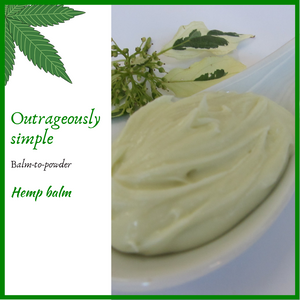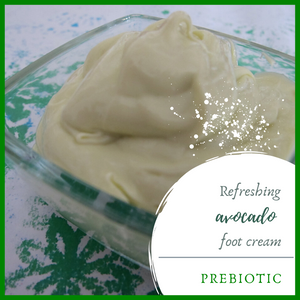
A few weeks ago we shared the tutorial for an oil-free emulsion with a very light skin feel suitable as a summer moisturizer. We took that emulsion to the next level by increasing the viscosity and adding more active ingredients to enhance the soothing and anti-inflammatory properties.
This is not a KISS emulsion and the list of the ingredients is rather long but every single ingredient is worth adding here and is doing a certain job. The oil content is still very low and the skin feel is very light (despite the thick consistency and high viscosity)
| Phase A | Dosage |
|---|---|
| Distilled or deionized water | to 100,0% |
| Aquaxyl | 2,0% |
| Chelator PA3 | 0,1% |
| Na-citrate | 0,5% |
| Phase B | |
| Natural emulsifier GSC POF | 5,0% |
| Triheptanoin | 15,0% |
| Modified rice starch | 5,0% |
| Tocopherol | 0,3% |
| Phase C | |
| Solagum AX | 0,3% |
| Tara gum | 0,1% |
| Phase D | |
| D-panthenol | 1,0% |
| Na-lactate | 2,5% |
| Gotu kola extract | 3,0% |
| Skin prebiotic | 2,0% |
| Allantoin | 0,1% |
| Phase E | |
| alpha-bisabolol | 0,2% |
| DEFENSIL®-PLUS | 3,0% |
| Calendula CO2 extract | 0,3% |
| Cedar nut oil | 2,0% |
| Phase F | |
| Cedar wood oil | 0,5% |
| Mandarine oil | 0,5% |
| Phase G | |
| no-Kons PA20 | 1,0% |
| Lactic acid | to adjust the pH |

Procedure:
1- Blend phase A and B in separate heat-proof beakers
2- Heat phase A and B in a water bath between 82-85 C.
3- Emulsify the oil phase in the water phase
4- Disperse the gum blend in the still hot emulsion
5- Start cooling down while stirring
6- When the temperature reaches under 40 C add the sensitive phases (Phase D and E)
7- When the emulsion reaches the room temperature prepare a 10% dilution and measure the pH. In our case it was 6,59.
8- Reduce the pH by adding lactic acid. If you are making this formulation for the first time add the lactic acid gradually and measure the pH in between.
9- Prepare another dilution of the emulsion and measure the pH. In our case it was 5,36. We are aiming for a pH between 4,9-5,5.
10-Add the preservative system and the essential oils. The preservative system works independent of the pH and you can add it before adjusting the pH as well.
11- Take the stability and micro kit samples and fill the rest in a suitable container
You can watch the video here


